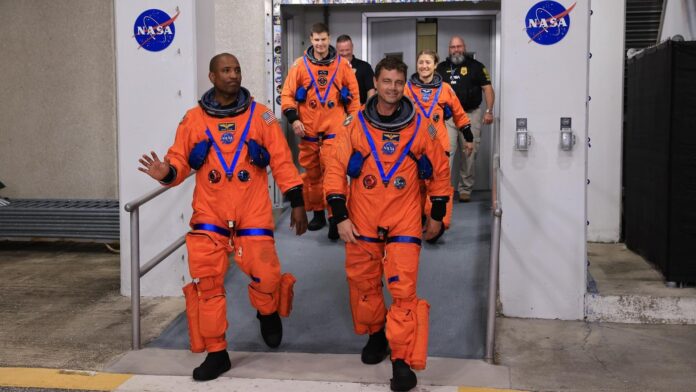The next astronauts headed to the moon are preparing for all contingencies as their mission approaches, and they recently completed a nighttime rehearsal of launch procedures.
NASA’s Artemis 2 mission — the first-ever crewed mission of the Orion capsule and Space Launch System (SLS) — is targeting a liftoff between February and April of 2026. Aboard Orion will be NASA astronauts Reid Wiseman, Victor Glover and Christina Koch, and Canadian Space Agency (CSA) astronaut Jeremy Hansen.
The quartet will fly Orion on a journey around the moon, looping around the natural satellite and slingshotting back to Earth on a “free-return” trajectory. The Artemis 2 crew practiced nighttime launch protocols during a recent dress rehearsal at NASA’s Kennedy Space Center (KSC) in Florida, during which they donned their spacesuits to review emergency egress procedures on the launch tower.
Beginning on Aug. 12, the Artemis 2 astronauts spent about two nights going through the motions of putting on their spacesuits inside KSC’s Neil Armstrong Operations and Checkout Building (O&C), for different launch day scenarios around the Launch Complex-39B (LC-39B) pad and nearby Vehicle Assembly Building (VAB), where the Artemis 2 SLS rocket is currently being stacked on its mobile launcher.
One exercise had the crew run through a launch scrub sequence, driving the 9 miles (14.5 kilometers) from O&C to LC-39B, and then back to O&C to gauge routes, communications and timing.
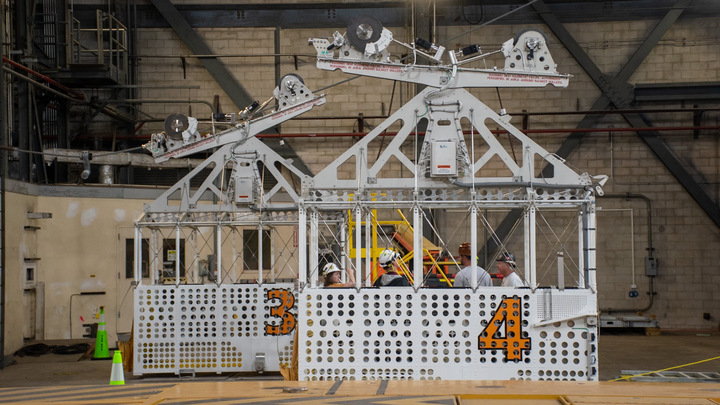
The Artemis 2 crew also practiced emergency egress procedures in the VAB’s High Bay 3, the site of the SLS stacking.
In the event of a launch day emergency in which the Artemis 2 crew is already inside Orion or near the top of the launch tower, a rapid exit that puts as much distance as possible between the rocket and the astronauts is necessary to ensure their safety. In these cases, crews board cable trolley baskets secured at the top of the mobile launch platform (MLP), which transport them to the perimeter of LC-39B’s “pad terminus area,” according to a NASA blog post.
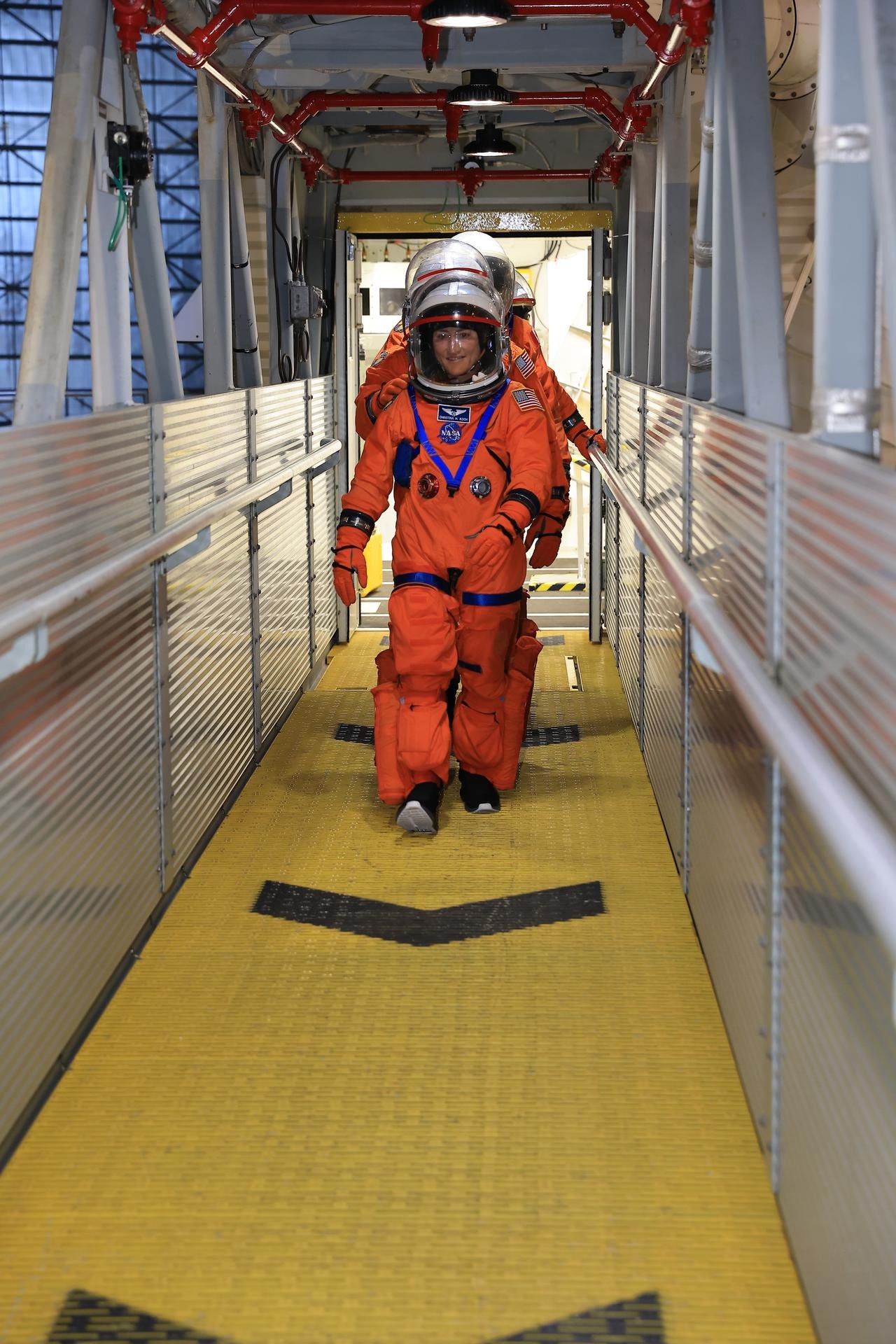
Those baskets are currently on the floor of the VAB, where the MLP and SLS are also currently being housed — about 3 miles (5 km) from LC-39B. To complete their emergency egress simulation, the astronauts traveled between both sites.
Moving from O&C to the VAB in full spacesuit attire, the Artemis 2 astronauts ascended the MLP tower to the White Room, the connection area at the end of the MLP crew access arm that opens to Orion’s hatch. Back on the VAB floor, the crew practiced entering and exiting the emergency egress baskets.
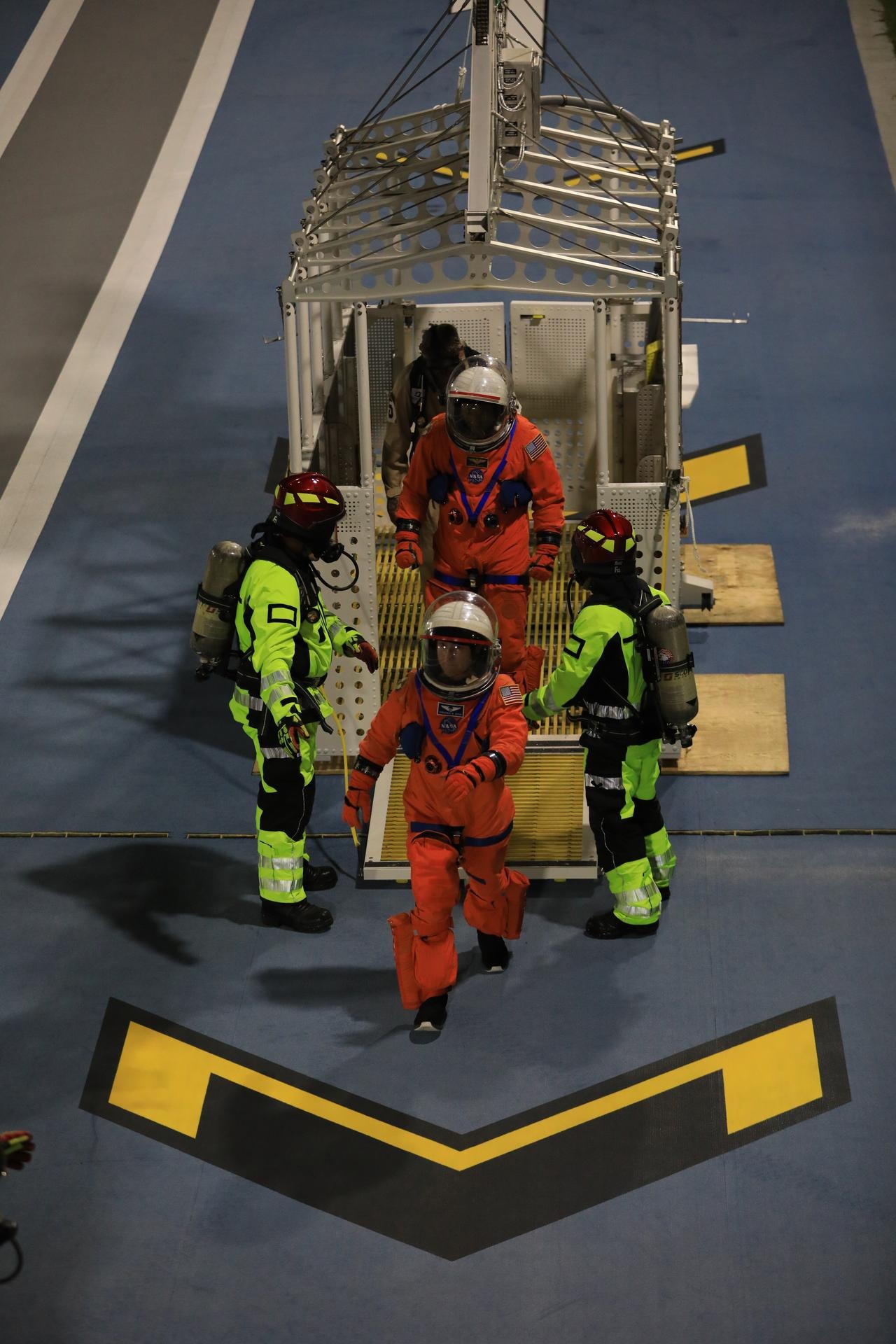
From there, the crew were transported to the LC-39B perimeter, where the baskets would carry them during an actual launch day emergency. Whisked inside armored response vehicles, the Artemis 2 crew were then driven to predetermined safe zones around KSC before the test was concluded.
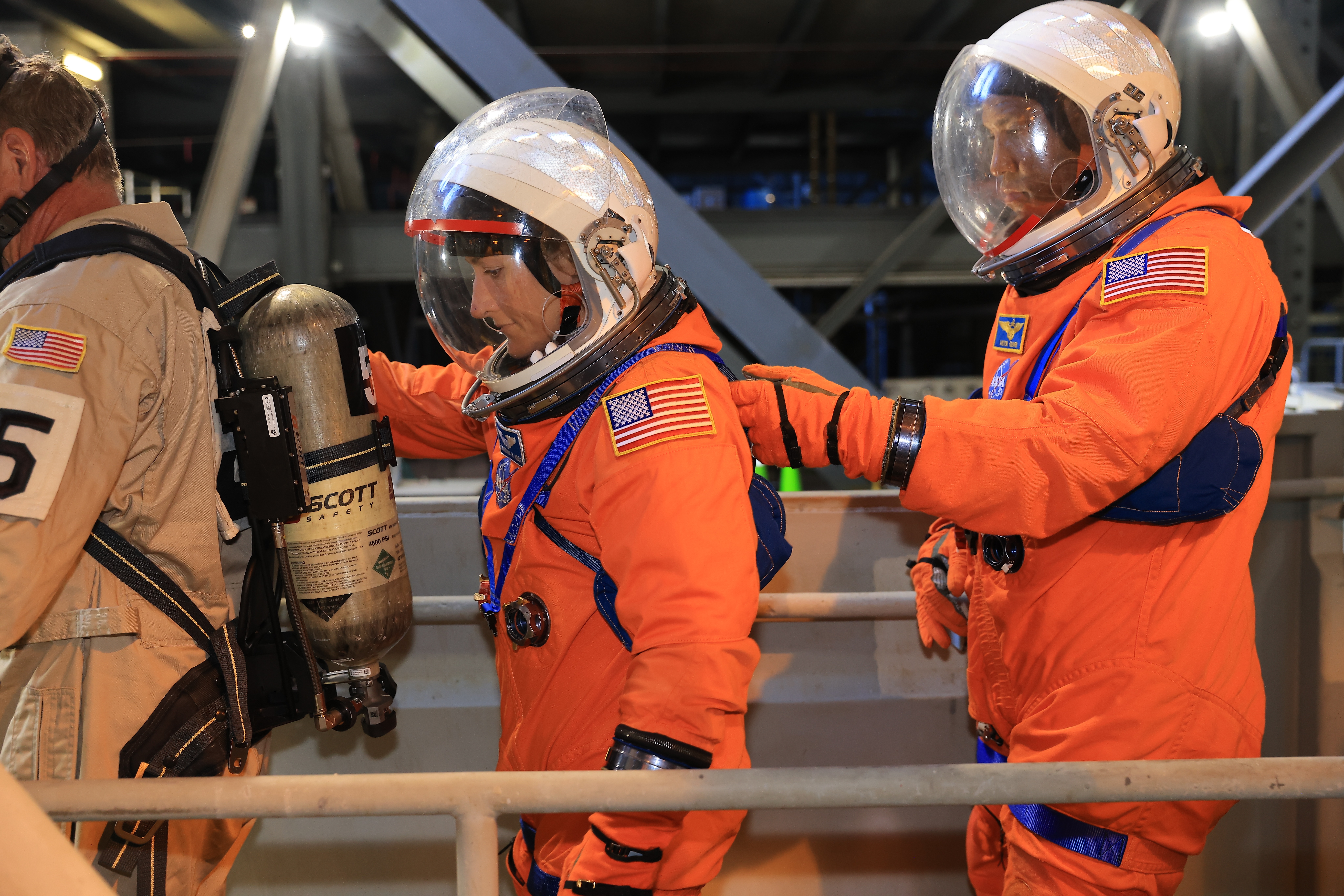
Last week’s nighttime dress rehearsal closely mirrors a daytime run-through that the crew completed in 2023. Since then, their mission has been delayed several times, kicking the goal post from 2024 to its current NET (no earlier than) date of February 2026 (though the crew says April is more likely).
NASA released highlights from the most recent launch day simulation, following the crew from suit-up, transport, ascent and descent of the launch tower to the cable baskets, and out to the launch pad. That full video is available below:
NASA’s first Artemis mission launched an uncrewed Orion on a month-long mission to lunar orbit at the end of 2022. Damage to Orion’s heat shield after reentry through Earth’s atmosphere and other issues have delayed the program’s second mission to 2026.
Artemis 3 is slated to fly NET 2027 and will be the first mission to land astronauts back on the surface of the moon since the end of the Apollo era more than 50 years ago. NASA has tapped SpaceX’s Starship rocket as that mission’s lunar lander. Starship is facing development delays of its own, threatening further delays if the vehicle isn’t ready on NASA’s timeline.
